Home » Posts tagged 'Office for the Advancement of Research'
Tag Archives: Office for the Advancement of Research
Honoring the Legacy of Dr. Maureen Allwood
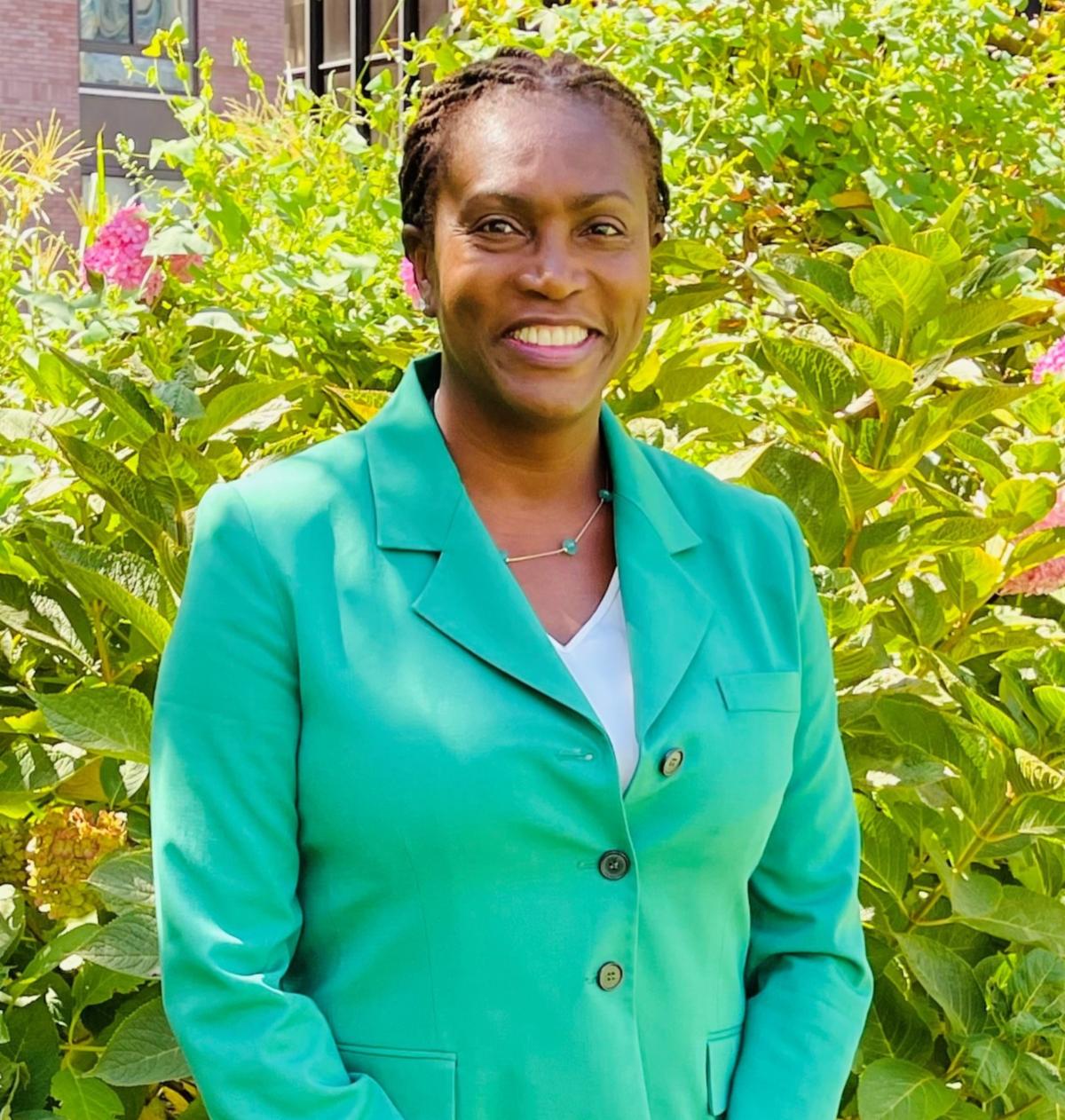
John Jay College staff in the Office for the Advancement of Research join the college community in mourning the passing of Dr. Maureen Allwood, a distinguished researcher, educator, advocate, and friend. Dr. Allwood’s sudden departure on Monday, March 4, in Providence, Rhode Island, has left a profound void in the hearts of those who knew her. Yet, her legacy of warmth, inspiration, and tireless dedication to marginalized communities will endure for generations.
A valued scholar in the field of psychology, Dr. Allwood’s work focused on understanding the developmental effects of trauma and violence, particularly emphasizing their disproportionate impacts on different sociodemographic groups. At John Jay College, she was a beacon of academic excellence and served as a professor of psychology since 2007. She also co-directed the department’s mentorship program for underrepresented and first-generation undergraduate students, leaving an indelible mark on the community with her passion and expertise. Her commitment to fostering diversity, equity, and inclusion within academia was unwavering, and her impact extended far beyond the classroom.
While grieving, her profound impact on the John Jay College community resonates deeply. Reflecting on her legacy, Dr. Angela Crossman, the Interim Dean of Faculty and Professor in the Department of Psychology where Dr. Allwood worked, aptly captured the sentiments of many, stating:
“Dr. Allwood’s passing was an incredible shock that is still difficult to fathom and is a tremendous loss to us all. She was a brilliant scholar, a passionate mentor and teacher, a dedicated and thoughtful colleague, and a warm and kind friend. I admired her greatly, appreciated the important work she was doing on the impact of trauma and violence exposure on youth development, and was always incredibly grateful that she chose to make John Jay her academic home. The world is a better place for her having been a part of it, and she will be deeply missed by her friends, family, colleagues, and students – students who will carry on her legacy of impactful and important scholarship conducted with integrity, rigor, and care.” said Dr. Crossman.
Beyond her scholarly pursuits, Dr. Allwood’s impact was deeply personal, touching the lives of students, colleagues, and friends alike. Professor Daryl Wout, Chair of the Psychology Department and Associate Professor of Psychology, emphasized her brilliance and passion to spearhead efforts to cultivate a more inclusive environment within our College and at the CUNY university level.
“Dr. Allwood was a beloved member of the John Jay community. She was an active department member and contributed to our students’ development and our clinical program’s growth. She fiercely advocated for an increased focus on diversity, equity, and inclusion (DEI) and spearheaded various DEI efforts at the college and university levels. Her research on the developmental effects of trauma and violence and their disproportionate impacts on different sociodemographic groups has significantly impacted our understanding of this important area. As a mentor, she was extremely supportive and nurturing of her students. She always prioritized her students and their success, even while on sabbatical. Beyond her impact at the College, she was a loyal friend, an exceptional mother, and a committed wife. As a community, we have been blessed by her presence and are deeply mourning her sudden death. She will forever be in our hearts and minds.” said Daryl Wout.
Reflecting on Dr. Allwood’s profound influence, Distinguished Professor Kevin Nadal wrote in his Instagram post, “She was a no-nonsense educator and mentor—someone who wanted her students to succeed while always encouraging them to work their hardest and never make excuses. She was an extraordinary colleague—one of the few humans who made an oppressive place like academia feel welcoming. SHE is what a professor looks like.”
Dr. Maureen Allwood received the 2023 OAR Scholarly Excellence Award winner, exemplifying a commitment to excellence, and has won several accolades and grants for the College. Her most recent groundbreaking study, “Youth Exposure to Gun, Knife, and Physical Assaults,” which examined PTSD symptoms across various demographic groups, was notably featured in Impact Magazine 2023 of the John Jay College of Criminal Justice. Her legacy, as showcased in Impact Magazine, serves as a testament to her enduring influence in shaping our understanding of critical societal issues.
As we honor Dr. Maureen Allwood’s memory, let us carry forward her excellence, compassion, and advocacy legacy. Though she may no longer be with us, her spirit will continue to inspire us to strive for a more just and equitable world.
Frank Pezzella Wants Increased Accountability on Hate Crime Reporting
During the chaotic years of the Trump Administration, the United States experienced a rise in hate crimes. This increase has been confirmed by FBI data collection, media reporting, and independent scholarship. According to Dr. Frank Pezzella, an Associate Professor of Criminal Justice at John Jay College and a scholar of hate crimes, four out of the past five years, from 2015 to 2019, have seen consecutive increases in hate crime offending in this country, something he says is new. Nine of the ten largest American cities had the most dramatic increases in hate crimes – including New York City.
Hate crimes, or bias crimes, are strictly defined by the FBI. The organization sets out 14 indicators that must be present for a criminal offense to be classified as a hate or bias crime, that provide objective evidence that the crime was motivated by bias. But according to Dr. Pezzella, the evidence to meet those criteria isn’t always clear. Not every hate crime is as flagrant as the Pulse nightclub shooting in 2016 or the 2018 attack on Pittsburgh’s Tree of Life Synagogue. To establish a hate crime was committed, first responding police officers must look for evidence of bias motivation – what Pezzella calls an “elevated mens rea” requirement. But bias can only be committed against legally protected categories, like race and ethnicity, sexual or gender orientation, disability, or religion, which vary from state to state. And the additional paperwork and procedural requirements that come with classifying an incident as a hate crime are, in his words, disincentivizing police reporting.
Undercounting Hate Crimes
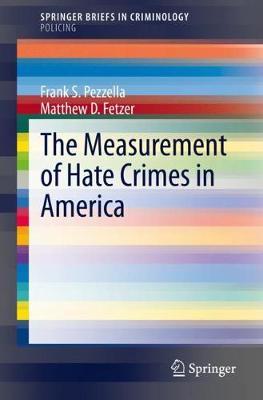 The result of these complications is rampant underreporting. In his new book, The Measurement of Hate Crimes in America, Dr. Pezzella looks at the reasons why hate crimes are so undercounted in the United States, and proposes some solutions for what law enforcement and policymakers can do to correct the issue. Since the enactment of the federal Hate Crimes Statistics Act in 1990, which required the Attorney General to collect data about hate crimes, the FBI has been fulfilling this mandate in the form of the Hate Crime Statistics Program, published annually as part of the Uniform Crime Report. According to Dr. Pezzella, since 1990 the UCR has reported an average of roughly 8,000 hate crimes per year; but victims, he says, report around 250,000 hate crimes per year. He attributes this substantial gap to a variety of factors including the evidentiary and procedural barriers noted above. In addition, only about 100,000 of these victimizations are ever reported to the police in the first place. And when victims do report, police departments are under no legal requirement to pass their findings on to the FBI.
The result of these complications is rampant underreporting. In his new book, The Measurement of Hate Crimes in America, Dr. Pezzella looks at the reasons why hate crimes are so undercounted in the United States, and proposes some solutions for what law enforcement and policymakers can do to correct the issue. Since the enactment of the federal Hate Crimes Statistics Act in 1990, which required the Attorney General to collect data about hate crimes, the FBI has been fulfilling this mandate in the form of the Hate Crime Statistics Program, published annually as part of the Uniform Crime Report. According to Dr. Pezzella, since 1990 the UCR has reported an average of roughly 8,000 hate crimes per year; but victims, he says, report around 250,000 hate crimes per year. He attributes this substantial gap to a variety of factors including the evidentiary and procedural barriers noted above. In addition, only about 100,000 of these victimizations are ever reported to the police in the first place. And when victims do report, police departments are under no legal requirement to pass their findings on to the FBI.
“Of the roughly 18,500 police departments, only maybe 75% participate in the Uniform Crime Report hate crime reporting program – note that it is voluntary,” says Pezzella. “So we don’t even know about hate crimes in 25% of precincts. And of the participating 75%, roughly 90% report zero hate crimes every year. So one of the reasons we wrote the book is that, either we don’t have hate crimes the way we think we do, or we have a systemic reporting problem.” It’s obvious which he believes is true.
The consequences of underreporting hate crimes are severe, Dr. Pezzella says. “To the extent that we underreport both the type and extent of victimization, it really does put a specific policy issue in front of us. We need to know who’s being affected, how they’re being affected, and the extent of the effect, in order to fashion remedies.” The only way to target treatment and services for the most vulnerable and likely victims is through accurate reporting.
Remedying Undercounting
In order to remedy undercounting and better target policy, Dr. Pezzella presents a number of recommendations in The Measurement of Hate Crimes in America. He calls for changes to take place within police departments, at the level of state and local politics, and in the criminal legal system. First, he suggests that every precinct have a written and clearly posted hate crime policy, and that every officer be trained to understand the rules for identifying bias crimes and the statutes governing them in their particular state. He would also like to see greater police-community engagement on this issue, with better tracking of non-criminal bias incidents – like seeing a swastika or other racist tag in the neighborhood – which Pezzella says often lead to violent bias crimes. He would especially like to see hate crime reporting made mandatory, with penalties or audits following a departmental report of zero bias crimes in a year.
Stepping out of police departments, Dr. Pezzella also calls for greater engagement from state and local politicians, who after all control the purse strings as well as set state legislation, but who are often hesitant to call attention to a problem with hate crimes in their district. Finally, he wants prosecutors’ offices to commit to seeking hate crime convictions, rather than settling for the easier task of convicting an offender for non-bias equivalents. With every actor across the board invested in tackling hate crimes and being transparent and proactive about applying best practices, offenders are put on notice that the community, including police, won’t allow these harmful crimes to continue.
Vicarious Victimization
Dr. Pezzella has been studying hate crimes since his graduate school years at SUNY-Albany, but he doesn’t feel he’s reached the end of this line of research. Going forward, he is interested in studying the deleterious and vicarious effects hate crimes can have on the victims’ communities. Because bias-motivated offenders target victims based on what they are rather than what they do, Dr. Pezzella says, there is a sense that anyone could become the next victim. This impersonal threat undermines societal ideals of trust and equality, and can even affect property values, as whole groups feel unsafe in certain areas and may be forced to relocate. Pezzella also mentions the psychological and emotional impacts of feeling under threat for simply being who and what you are. “When a victim goes home and says they were a victim of a hate crime, in what way does it impact the quality of life or sense of safety for secondary victims [i.e., the victim’s community]?” he asks. “What do they do? While we understand the direct impact, we know less about this vicarious impact, and how far it extends beyond the primary victim.”
He also has his eye on current events, especially the rise of domestic terrorism in the United States. Dr. Pezzella is concerned about the growing number of organized hate groups in recent years, and how emboldened they have been by rhetoric from the top levels of government. While many mass shootings have been categorized as domestic terrorism, Pezzella also sees evidence of bias that might categorize these events as hate crimes. If they are being left out of crucial counts that help to allocate resources and fight back against hate in this country, he wants to know.
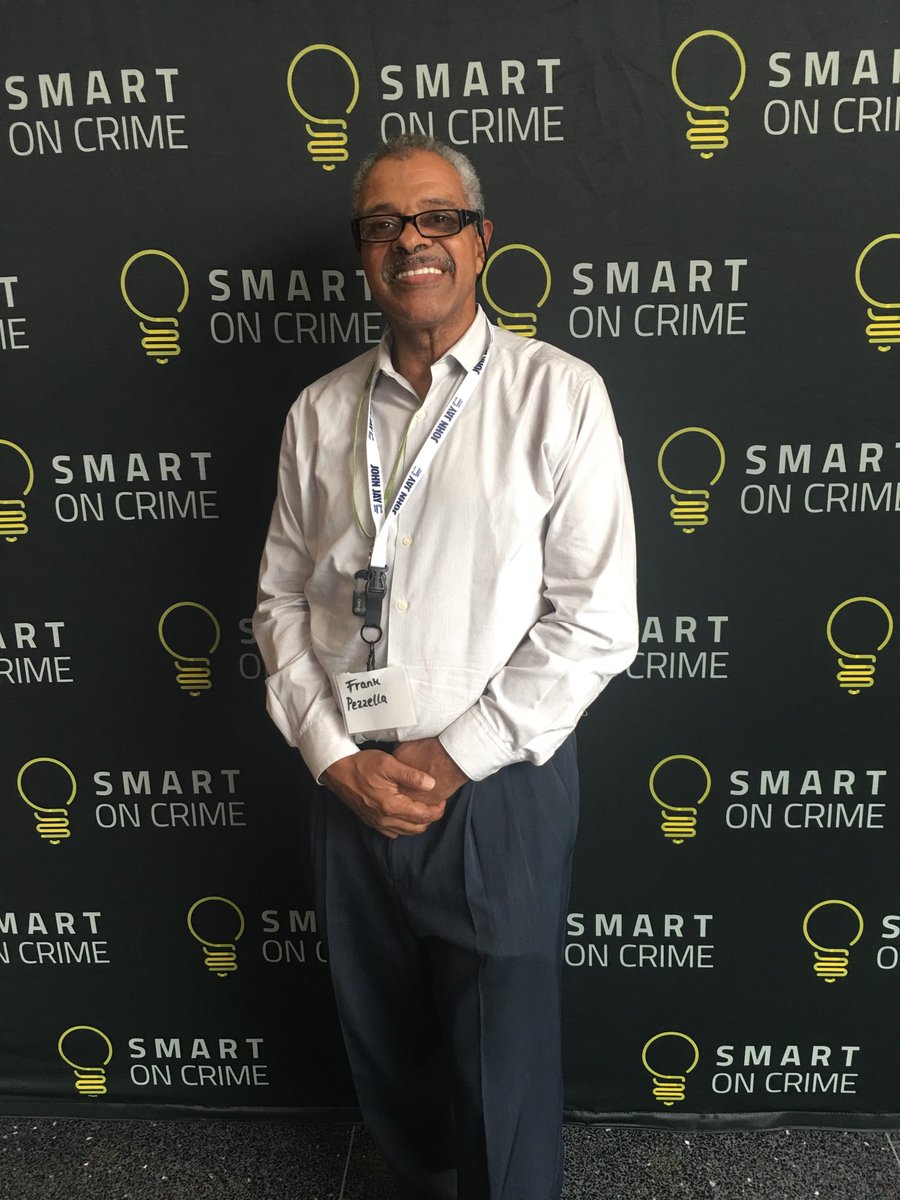 Dr. Frank Pezzella is an Associate Professor of Criminal Justice at John Jay College. His primary research focus is on the causes, correlates, and consequences of hate crimes victimizations. He also conducts research on issues that relate to race, crime and justice. In addition to his most recent book, he is also the author of Hate Crime Statutes: A Public Policy and Law Enforcement Dilemma, as well as numerous peer-reviewed articles.
Dr. Frank Pezzella is an Associate Professor of Criminal Justice at John Jay College. His primary research focus is on the causes, correlates, and consequences of hate crimes victimizations. He also conducts research on issues that relate to race, crime and justice. In addition to his most recent book, he is also the author of Hate Crime Statutes: A Public Policy and Law Enforcement Dilemma, as well as numerous peer-reviewed articles.
A Critical History of Incarceration in New York City
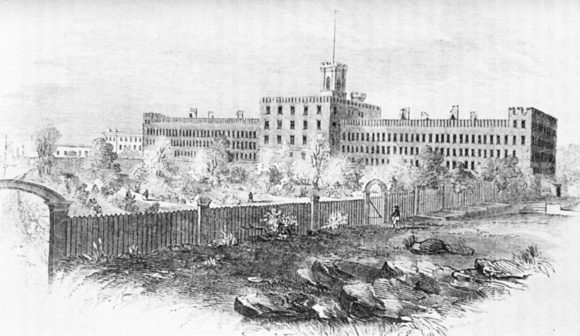
Dr. Jayne Mooney is an Associate Professor of Sociology at John Jay and a member of the doctoral faculty of Women’s Studies and Sociology at the CUNY Graduate Center. She is also a director and founding member of the Critical Social History Project (CSHP), a research initiative and part of John Jay’s Social Change and Transgressive Studies Project that draws on archival material to shed light on the history of incarceration in New York City.
The project began in 2015 with a conversation spurred by reporting on abuse, poor conditions, and a rash of tragedies at Rikers Island; how best, Mooney and colleagues wondered, to preserve the memories of those who had been affected by the infamous jail, including not only the incarcerated but also their friends and families, guards and educators? And so they began the “Other City” project, which forms the largest component of the CSHP. Informed by their research into the history of New York’s penitentiary system, Mooney’s working group is pointing out the problems inherent in Mayor Bill de Blasio’s administration’s proposal to close Rikers and open four new city jails.
“On the most basic level, what we’re showing is that the current proposals are reinventing the wheel. It’s the same thing that’s always happened. Closing an institution and setting it up again, you’re going to have the same problems, because you’re not getting to those deep-rooted, structural issues,” says Mooney.
Reinventing the Wheel
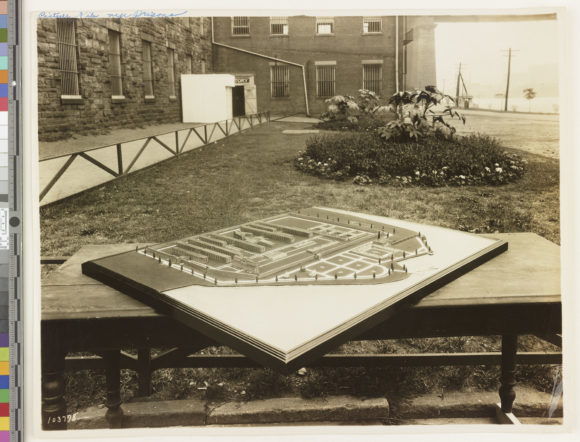
In a forthcoming article, “Rikers Island: The Failure of a ‘Model’ Penitentiary” due to be published in The Prison Journal in 2020, Mooney and her co-author, CUNY graduate student Jarrod Shanahan, go through the instructive failures of incarceration reform in New York City back to the 1735 construction of the Publick Workhouse and House of Correction. They argue that a lack of historical documentation has allowed policymakers to strategically “forget” the failures of past “model” or “state of the art” institutions, continually replacing old jails with new without a look at the larger issues that have led to waves of highly praised but ultimately unsuccessful penal reform.
Set against the backdrop of historical, social and political context, Rikers’ closure and the proposals to replace it look familiar. “All of these places opened in the spirit of optimism—everything was going to change. And then everything goes wrong, these institutions are denounced as embarrassments, and the decision is made to close them down and rebuild. Of course, that’s what’s been happening in the present moment,” Mooney says. She and her colleagues encourage the Mayor’s Office to look beyond the walls of the prison for new solutions to social problems faced by New York and, indeed, the United States.
(Read her December 2019 letter to The Guardian on the subject, “Rikers has failed like others before it, but the solution is not new jails.”)
Preserving Voices, Preserving Justice
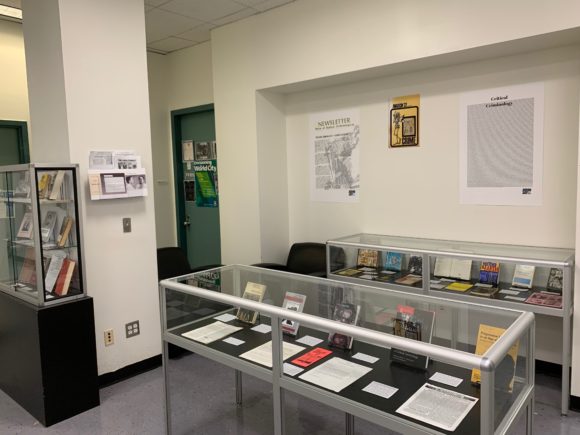
Mooney’s challenge to the new proposals is grounded not only in her work in political social history, but also in her background as a critical criminologist. “There’s a very strong abolitionist line all the way through critical criminology,” she notes, which informs the way the Critical Social History Project has approached critiques of the plan to build new jails.
The CSHP isn’t only focused on documenting mass incarceration in NYC. As the Vice Chair of the American Society of Criminology’s Critical Criminology and Social Justice Division, as well as the archivist, Mooney has been accumulating archival information related to the division and the field’s history of activism. The CSHP’s Preserving Justice component, jointly directed by Mooney and Visiting Scholar Albert de la Tierra, has created an exhibition in the Sociology Department displaying some of the core critical criminology texts. It’s open to any students, faculty or staff who are interested in the history of the field and the work of its important thinkers.
Expanding Research Horizons
Mooney is proud to talk about her team of dedicated researchers, which includes both undergraduate and graduate students. With the help of their diverse experiences and interests, the Critical Social History Project is expanding its remit, from the history of Rikers Island to topics including the history of women’s incarceration, other New York carceral institutions including the Tombs and Sing-Sing, mental illness and incarceration, and more. Together, they are showing the persistence of the problems related to the history of mass incarceration, no matter where in history you begin your research—up to and including the present day.
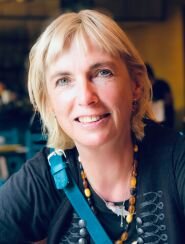 The Critical Social History Project is directed by Jayne Mooney and Albert de la Tierra. Other members are Sara Salman (Victoria University of Wellington), Nick Rodrigo, Jacqui Young, Susan Opotow and Louis Kontos, as well as John Jay students Camilla Broderick, Anna Giannicchi, Tayabi Bibi, Andressa Almeida, Marcela Jorge-Ventura, and Audrey Victor.
The Critical Social History Project is directed by Jayne Mooney and Albert de la Tierra. Other members are Sara Salman (Victoria University of Wellington), Nick Rodrigo, Jacqui Young, Susan Opotow and Louis Kontos, as well as John Jay students Camilla Broderick, Anna Giannicchi, Tayabi Bibi, Andressa Almeida, Marcela Jorge-Ventura, and Audrey Victor.
You can learn more by visiting the Critical and Social History Project’s website.
Using Crime Science to Fight for Wildlife
There is no question that the fashion industry causes great harm to the environment. The industry’s faddish nature, combined with the overproduction of low-cost, low-quality pieces, is designed to encourage overconsumption. Production of fast fashion garments eats up precious resources, like clean water and old-growth forests, and discarded clothing can sit in landfills for hundreds of years, thanks to synthetic materials used in construction.
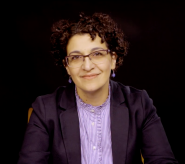
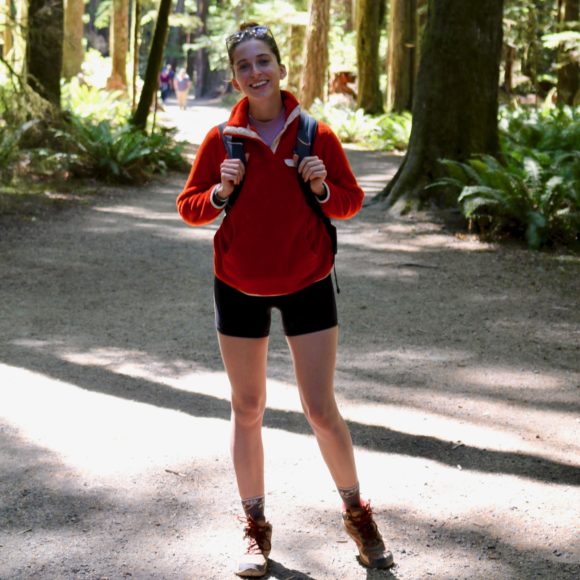
According to scholars Monique Sosnowski—a Ph.D. candidate in criminal justice at the CUNY Graduate Center—and John Jay Assistant Professor of Criminal Justice Dr. Gohar Petrossian, pollution is not the fashion industry’s only crime. In a new article, they investigated what species were being utilized for the fashion industry, which is worth over $100 billion globally, in order to better understand the damage the industry causes to wildlife and wild places.
Sosnowski and Petrossian looked at items imported by the luxury fashion industry and seized at U.S. borders by regulatory agencies between 2003 and 2013. Their study found that, during that decade, more than 5,600 items incorporating elements illegally derived from protected animal species were seized. The most common wildlife product was reptile skin—from monitor lizards, pythons, and alligators, for the most part—and 58% of confiscated items came from wild-caught species. The authors also found that around 75% of seizures were of products coming from just six countries: Italy, France, Switzerland, Singapore, China and Hong Kong. The heavy involvement of the European countries was unexpected, according to Dr. Petrossian, because they are key players in fashion design and production but “don’t generally come up in broader discussions on wildlife trafficking.”
THE SCIENCE OF WILDLIFE CRIME
The paper applied “crime science, a body of criminological theories that focus on the crime event rather than ‘criminal dispositions,’ to understand and explain crime. The overarching assumption is that crime is an opportunity, and it is highly concentrated in time, as well as across place, among offenders, and victims,” says Dr. Petrossian. Their scientific approach enabled the authors to analyze patterns and concentrations in wildlife crime, which Sosnowski notes is among the four most profitable illegal trades.
“We are currently living in an era that has been coined the ‘sixth mass extinction,’” she says. “It is crucial that we understand the impact that humans are having on wildlife, from habitat loss to the removal of species from global environments. Fashion is one of the major industries consuming wildlife products.”
A background in wildlife conservation, including unique experiences like responding to poaching incidents in Botswana and rehabilitating trafficked cheetahs in Namibia, led Monique Sosnowski to a Ph.D. in criminology; she wanted to move beyond a more traditional conservation-informed approach to address what she’d seen in the field. Working with Dr. Petrossian on a series of studies applying crime science to wildlife crimes has given her a broader view of the effects of wildlife-related crime on global ecosystems.
CREATING SOLUTIONS, SAVING WILDLIFE
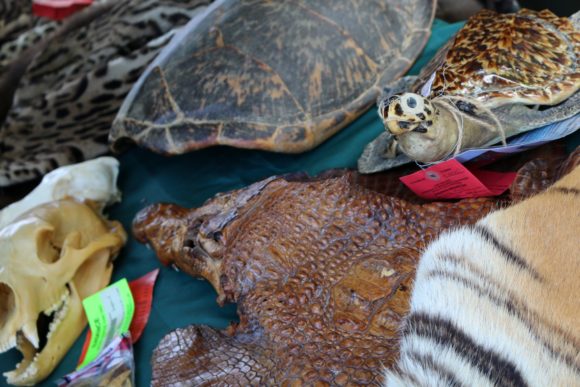
Why is it important to understand what species are most commonly used in luxury fashion products, and where they are coming from? A study like this one provides information about trends that policymakers can use to strengthen or focus enforcement and inform better understanding of the issues. Sosnowski calls this “the key to devising more effective prevention policies.”
Currently, global regulation of the trade in wildlife products, including leather, fur, and reptile skin that come from species both protected and not, is the province of the Convention on International Trade in Endangered Species (CITES); this treaty aims to ensure that international trade in wild animals and plants does not threaten their survival. But the treaty is limited in scope.
“Given the prevalence of exotic leather and fur in fashion, we believe CITES and other regulatory bodies should enact policies on its use and sustainability in order to protect wild populations, the welfare of farmed and bred populations, and the sustainability of the fashion industry,” Sosnowski says.
Consumers also have a role to play. “We are all led to believe that products found on the shelves are legal, but as this study has demonstrated, that isn’t always the case. Consumers of these products are the ones who have the power to change the behaviors of a $100 billion industry. We need to ask questions about where our products were sourced, and respond accordingly.”
###
Summarized from EcoHealth, Luxury Fashion Wildlife Contraband in the USA, by Monique C. Sosnowski (John Jay College, City University of New York) and Gohar A. Petrossian (John Jay College, City University of New York). Copyright 2020 EcoHealth Alliance.
Gerald Markowitz shines light on corporate bad behavior
Distinguished Professor of History Gerald Markowitz and long-time writing partner David Rosner, a Professor of Sociomedical Sciences at Columbia University, have been researching industrial pollution and contaminants since the early 1970s. Their first jointly-authored book, Deadly Dust: Silicosis and the Politics of Occupational Disease in Twentieth-Century America, explored historical evidence of the lung disease silicosis, which is a hardening of the lungs due to inhaling dust found in sand or rock. Thanks to Deadly Dust, Markowitz and Rosner came to the attention of lawyers bringing workplace safety suits on behalf of construction workers suffering from silicosis, launching a long career of research and expert testimony on occupational disease and toxic substances. In the early 2010s, the duo began an investigation into asbestos and asbestos-related disease.
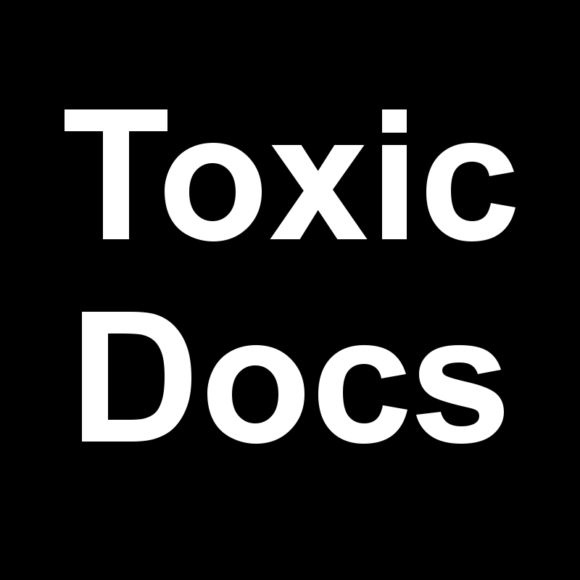 Their work turned up hundreds of articles on the dangers of asbestos, now a watchword for poisons that can lurk in our homes, dating from 1898 to the present. Markowitz and Rosner also referred to corporate records and documents made public through court discovery; a more recent project called ToxicDocs is an open-source, online database of more than 15 million pages of documents related to silica, lead, vinyl chloride, and asbestos that were previously not easily accessible.
Their work turned up hundreds of articles on the dangers of asbestos, now a watchword for poisons that can lurk in our homes, dating from 1898 to the present. Markowitz and Rosner also referred to corporate records and documents made public through court discovery; a more recent project called ToxicDocs is an open-source, online database of more than 15 million pages of documents related to silica, lead, vinyl chloride, and asbestos that were previously not easily accessible.
In June, Markowitz’s expertise was featured prominently in the American Journal of Public Health, in an article detailing a representative episode in the history of the struggle between industry and regulators. In “Nondetected: The Politics of Measurement of Asbestos in Talc, 1971-1976,” Markowitz and his co-authors describe the years-long interval between the talc industry’s acknowledgement that asbestos is toxic and their taking action to protect consumers, and the subsequent conflict between the Conflict, Toiletry, and Fragrance Association (CTFA) and the U.S. Food and Drug Administration (FDA) over regulating appropriate methods for detecting asbestos contamination in consumer talc products and setting safety standards.
The focus of the article, said Professor Markowitz, “was that the cosmetic industry, I think very consciously, used this concept of nondetected, which we as consumers think of as ‘no asbestos in the talc,’ but nondetected could mean enough asbestos in the talc to cause disease. And that’s what the industry understood, but consumers did not.”
The CTFA’s 1970s victory in lowering detection standards and advocating for self-regulation is still bearing fruit; recent lawsuits against talcum powder manufacturers allege the household product causes cancer due to asbestos contamination. As recently as 2018, courts awarded plaintiffs record damages of close to $4.7 billion in a case against manufacturers, capturing public attention.
We sat down with Professor Markowitz to talk about his work researching industrial poisons and about corporate responsibility to the consumer in today’s world. Read on to hear from Professor Gerald Markowitz in his own words.
Why do you believe that talc product manufacturers continued to accept a lower standard for asbestos eradication despite known health dangers, not to mention the risks of litigation?
When they developed this idea, in the 1970s, their basic argument was that there should be as little federal regulation as possible. [The CTFA] was able to lobby the federal FDA that the technologies that the FDA was proposing were not able to be completely accurate, would give too many false positives, would take a long time to do, and would be costly. So they proposed their own method. And they’re able to eventually convince the FDA that it should not be federal but industry regulation.
But what they admit privately is that their method, which is not as demanding as the FDA’s proposed method, was not necessarily accurate and was not necessarily consistent. So to a certain extent, they were really able to forestall regulation by claiming that they could do as good a job [of detecting asbestos in talc products], even though they themselves admitted that they could not do as good a job. And by the very nature of their method, they were going to uncover much less asbestos than the FDA’s method was capable of uncovering.
Do you think there’s something special about the current moment that made this article of particular relevance?
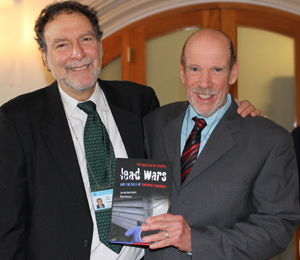
I think it was the variety of ways that deregulation has had an impact on the health and welfare of people in the United States and other parts of the world. To the extent that these articles could help to call attention to that happening, they are important. The advantage of history is that we are able to really see the process unfold in a kind of detail that we don’t necessarily have in observing regulatory of anti-regulatory actions taking place at the moment we’re living in. That level of detail I think is instructive in terms of being able to understand how similar things could be happening today.
Would you like to see this history galvanize some kind of action?
The most important thing that can happen is that people really have to take politics seriously. The United States has a long history of mass movements really demanding and achieving fundamental reforms. Just going back to the 1960s, the demand for civil rights, the efforts of people to get voting rights for African Americans, that didn’t happen simply because Congress decided to pass a law; people were demanding it in mass actions. These are really instructive in terms of what can happen today, and even what is happening today.
Pieces accompanying your article in the AJPH, such as the one by former Assistant Secretary of Labor for the Occupational Safety and Health Administration David Michaels, suggest that corporate influence is getting stronger, to the detriment of consumer and public health. The current administration has loosened or degraded regulatory standards for a variety of products — should we expect more legal battles down the line?
Yes, absolutely. Since the 1970s there has been a very sustained effort by many businesses to oppose regulation, and you get the classic statement by Ronald Reagan, when he said that ‘government isn’t the solution, government is the problem.’ I think the legacy of that, of the push for deregulation as a means of stimulating the economy and freeing business to innovate and all of those kinds of ideas, I think the legacy of that is going to be a variety of problems, not only in consumer products but in environmental damage. It’s going to be for workers, for consumers, for people living in communities where toxic substances are going to be released, we’re going to be suffering those consequences, and the unfortunate thing is that it’s only going to be remedied in retrospect.
And to add one other element, we know that the burden, especially of environmental pollution, toxic waste, global warming, is going to affect poor communities and communities of color to a much great extent than richer communities. At a college emphasizing social justice, this becomes an even more vital issue.
Are there other consumer products known to include dangerous adulterants that are similarly being ‘underregulated?’
BPA [bisphenol A, a chemical used to make certain plastics since the 1960s] is one example; a lot of household cleaners and flame retardants are another one. We’ve discovered that flame retardants are extremely dangerous to people, and that people have them in their bodies. Formaldehyde is another one; there was a scandal about formaldehyde in temporary housing given to people after Katrina, that was unsafe.
There are lots of things we have clues about, but the real scandal is that chemicals are being produced and we’re using them in very large quantities, that have never been tested. And in the United States we have this philosophy, innocent until proven guilty. It’s the same philosophy with chemicals — they are innocent until proven guilty. The Europeans have a system, chemicals can’t be introduced until they’re proven safe. It’s a basic difference in philosophy that companies need to prove that something is safe before they can experiment on us and ensure it doesn’t cause cancer. But in the United States they say that if it does cause cancer, we’ll take it off the market, but that’s very difficult to prove and you’ve done the damage already.
You note in your article that talc researchers were disappointed when their work became known to the industry, but that ‘nothing was done until the results became public.’ Do you think it remains true in cases of corporate wrongdoing that nothing is done until the public finds out all the information?
In the 1970s, there was this wonderful act passed called the Freedom of Information Act (FOIA). The fundamental principle behind that was that if you shine the light of publicity and information and people have that, then they have the ability to act in their own interests. One contribution that historians can make is, using the older historical records, we can cast a light on activities and attitudes and actions that permit people to see what is going on and demand change.
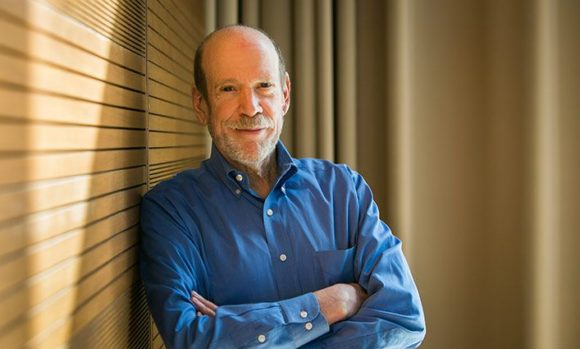
Gerald Markowitz is a Distinguished Professor of History in the Interdisciplinary Studies Department at John Jay College and the Graduate Center of CUNY. His research focuses on the history of public health in the 20th century, environmental health, and occupational safety and health. He has authored a number of books, most recently Lead Wars: The Politics of Science and the Fate of America’s Children, also in cooperation with David Rosner.
Research Productivity 2018: A Thread
In June 2019, OAR shared a few of our 2018 most productive scholars with our Twitter followers. Check out the whole thread below, and don’t forget to follow @JohnJayResearch and the researchers mentioned below to get more information in real time!
Last year we recorded more than 700 journal articles and book chapters published by @JohnJayCollege faculty members! While we finish adding up this year’s #JJCResearch productivity, we want to introduce you to some of our most productive #JJCFaculty scholars

First up is @ktwolff11, who also won the 2019 Scholarly Excellence Award and the Donal EJ MacNamara Award for significant scholarly contributions to #criminaljustice! His most recently published article examines patterns of recidivism after a sex offense, find it here: (bit.ly/2XaqWmw)

Next is @kevinnadal, @JohnJayCollege professor of psychology and the author/editor of two books in 2018! His research explores the impacts of microaggressions on the mental health of marginalized groups including people of color, women, LGBTQ individuals, & more. #JJCResearch

Today’s ft. #JJCFaculty scholar is @ElizabethJeglic, who published 2 books, 9 peer-reviewed articles, 6 book chapters, and 7 online articles and blogs last year!! Her research focuses on sexual violence prevention — her latest article is in journal ‘Sexual Abuse’ #JJCResearch

Next up is @JohnJayCollege criminal justice prof @PizaEric. Not only is he often featured by the media as an expert on policing matters, but he published 13 journal articles in 2018 on the data behind risk-based policing, CCTV, and more! #JJCResearch
Do you know @JohnJayCollege poli sci prof Samantha Majic? An OAR #BookTalk alum (), last year she published new book “Youth Who Trade Sex in the U.S.” and has been speaking and writing about the harms of & issues surrounding sex trafficking. #JJCResearch
You can watch her 2014 book talk here: (bit.ly/2KAdH8P)

Last year, @DrMazzula, who is the founder of the @LatinaRAS as well as a @JohnJayCollege prof, kept busy writing and presenting about two key issues: microaggressions, and gender/minority representation in academia. #thisiswhataprofessorlookslike #JJCResearch

And don’t forget Philip Yanos, who in 2018 not only published his book ‘Written Off,’ but also a monthly column in @PsychToday by the same name. His articles, on stigma attached to mental illness, were cited more than 700 times last year!
#JJCResearch
Find his blog here: (bit.ly/2IQ2w9J)
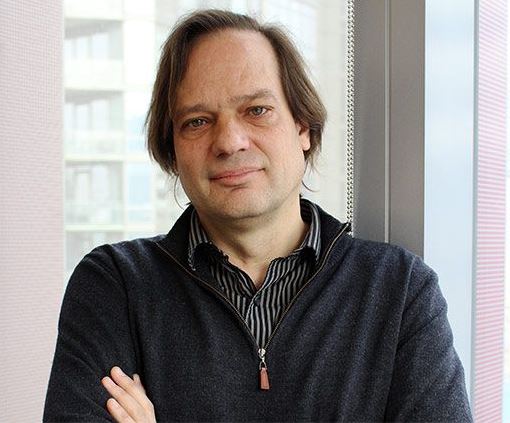
And last but not least, @JohnJayCollege is home to some great podcasts. Check out @indoorvoicespod, @TWOH_VL, @NewBooksPoliSci, @QualityPolicing, @JohnJayTLC on Teaching and Learning, and @lavueltablog. So much to learn about!
Social Inclusion Leads to Violence Reduction in Ecuador – Dr. David Brotherton
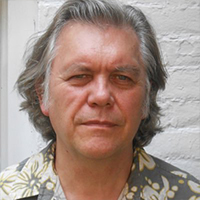 Since 2007, the Ecuadorian approach to crime control has emphasized policies of social inclusion and innovations in criminal justice and police reform. One notable part of Ecuador’s holistic approach to public security was the decision to legalize a number of street gangs in 2007. The government claimed this decision contributed to the reduction of homicide rates from 15.35 per 100,000 in 2011 to close to 5 per 100,000 in 2017. Professor of Sociology David Brotherton was commissioned by the Inter-American Development Bank to spend six months evaluating these claims through a qualitative research project focusing on the impact on violence reduction had by street gangs involved in processes of social inclusion. The results were published in 2018, arguing that social inclusion policies helped to transform gang members’ social capital into a vehicle for behavioral change. In December 2018, Dr. Brotherton was awarded a grant by the Harry Frank Guggenheim Foundation to continue the work.
Since 2007, the Ecuadorian approach to crime control has emphasized policies of social inclusion and innovations in criminal justice and police reform. One notable part of Ecuador’s holistic approach to public security was the decision to legalize a number of street gangs in 2007. The government claimed this decision contributed to the reduction of homicide rates from 15.35 per 100,000 in 2011 to close to 5 per 100,000 in 2017. Professor of Sociology David Brotherton was commissioned by the Inter-American Development Bank to spend six months evaluating these claims through a qualitative research project focusing on the impact on violence reduction had by street gangs involved in processes of social inclusion. The results were published in 2018, arguing that social inclusion policies helped to transform gang members’ social capital into a vehicle for behavioral change. In December 2018, Dr. Brotherton was awarded a grant by the Harry Frank Guggenheim Foundation to continue the work.
What did you learn during the initial phase of your research?
We learned a lot. These are very large groups, with over 1,000 members spread across Ecuador, and they managed to create a new kind of culture within their organizations that was pro-social, pro-community, with a strong element of conflict resolution and mediation, cultures where they were working as partners with the government and non-state actors like universities on progressive agendas. They were partners in pro-social activities, everything from creating new youth cultures to voting, job training, and strengthening local communities, all of which you don’t associate with street gangs. And in their ranks are the most marginalized youth of their country, so they can reach kids that are so marginal that other organizations don’t reach them, even indigenous kids from the Amazon, and it is so important to bring them in and work with them. This is all across Ecuador.
When we asked the members what had changed, they said they don’t get into the same level of conflict. Where there might have been a previous period where they were at war with one another, they were able to end it with the government playing a role.
Sometimes these interventions don’t last very long, once the money runs out, but here you had a government that constantly maintained a presence and lived up to its promises, so the trust level became really high.
The end result is not necessarily unique, we’ve seen this in other places like with the Latin Kings in New York and various places in Spain, but the outcome across ten years was quite remarkable. Homicide rates are so indicative of a country’s ability to resolve tension, so when you see the inarguable statistics of homicides going down every year for ten years — it’s related to different factors, they also reformed the police department, but when you see that kind of result it’s pretty impressive.
What key aspects of the inclusion policy allowed gangs to successfully transition from criminal to purely social organizations?
The government recognizes that they won’t change overnight, because the economic situation doesn’t allow that, but you make it such that whatever [gangs] are involved in doesn’t hurt the community, and there are other pathways they can move into and you are creating real opportunities. So what does that look like? It looks like being recruited into programs at the university to give you skills, diploma programs. And these kids become a kind of role model for their mates.
In addition to that, [all of the gangs] were incorporated as non-profit organizations, which allows them to get government grants to do things like community building. You’re not just rhetorically arguing for a new culture, you’re making a new culture and making it happen. Those joining the organization come in with a different set of expectations, and it has a tremendous ripple effect. They created a strata of professional workers.
Also, the police are told not to pick them up, or intervene in their meetings. And the kids don’t fear any kind of stigma, they’re not constantly being harassed. With the communitarian police force, they worked with the heads of the police. It’s a totally unique phenomenon, and flies directly in the face of what we’re pushing in the U.S., which is zero tolerance.
Where else might this social inclusion approach be effective in curbing violence?
I mean, it could be effective in the U.S. Social inclusion is the complete opposite of the repressive policy that nearly always leads to what we call deviant amplification. You need to stop the stigmatization and have meaningful relationships with street groups, with intermediaries from the government. In the U.S., the police are so strong that this is all very difficult.
To make this work anywhere, politically you need to make a decision about where to invest resources. [In Ecuador,] they didn’t invest in the military, they didn’t invest in massive tax breaks for corporations, in fact they did the opposite. They boosted money for culture and art. If you stick with these political decisions, they will pay dividends over time.
What is the next step in completing this research?
I have a full-time field researcher, Rafael Gude, who has been working in Ecuador since April, focusing on the relationship between the Catholic University of Quito and the Latin Kings and Queens. I’m going down myself July 3-15 to do field work both with the Latin Kings and Queens and to attend a big national meeting in Cuenca, then I travel to Las Esmeraldas, on the Pacific coast of Ecuador, where we will interview members of the third major street organization in Ecuador, called Masters of the Street. We want to understand the changes in that group and the roles of social and political empowerment in the reduction in violence.
Las Esmeraldas had the highest rate of violence, with a really high homicide rate of around 70 per 100,000, which is now down to 20, and it’s on the border with Colombia so this is the biggest drug trafficking area and also very poor. This is a completely different socio-economic context, and mainly black Ecuadorians, so we want to see how the whole issue of race works itself out as they’re trying the same policy.
Also, things have changed; although the same party is in power, it’s not the same government. We thought they were going to completely reverse the policy, but a number of media organizations got into this report, and I gave this big talk in Medellín last year, and it’s become a real media story about this success. So this government has maintained the same policy, and embraced it as much or more than the last government.
Right now, we are also looking to do work in the prisons where the inmate population has increased substantially in recent years and many of the incarcerated have joined the groups.
Why is it important to continue this research?
The importance of this work is that it demonstrates a viable alternative to “zero tolerance” and other repressive policies that led to the highest homicide rates in the world — for example, in Central America’s Northern Triangle. The topic has been covered by the BBC and is out in English, Spanish and Portuguese, with multiple other Latin American nations now taking notice, including the president of Mexico.
How does your research dovetail with the HFG Foundation’s mission?
The research meshed with their general focus; they’ve always supported innovative anti-violence or violence prevention studies. For them to come on board, it’s a big deal.
You can learn more about the first stage of this research via the report on the Inter-American Development Bank’s website, or by listening to him talk about his research on the BBC program The Inquiry (starts at 13:43) or on the Peter Collins Show podcast.
Dr. David Brotherton is a Professor of Sociology at John Jay College and the CUNY Graduate center. He is the author of a number of books on gangs and immigration, most recently co-authoring Immigration Policy in the Age of Punishment: Detention, Deportation, and Border Control. He is a founding member of the Social Anatomy of a Deportation Regime research working group based at the Center on Social Change and Transgressive Studies at John Jay.
Dr. Phillip Atiba Goff – Data Science for Justice
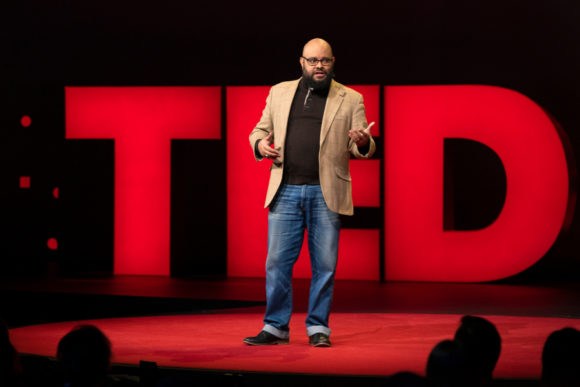
On April 16, 2019, John Jay College’s Franklin A. Thomas Professor in Policing Equity Dr. Phillip Atiba Goff spoke at Session 4 of TED2019 in Vancouver. The program featured eight speakers representing eight projects that are receiving funding from The Audacious Project in 2019. Dr. Goff spoke on behalf of his independent non-profit organization, the Center for Policing Equity (CPE), which was one of this year’s Audacious Projects.
CPE focuses on addressing racism in the United States. According to Dr. Goff, “When we change the definition of racism from attitudes to behaviors, we transform that problem from impossible to solvable.” CPE’s project, COMPSTAT for Justice, is a database leveraging data collected from police departments and cities on police behavior in an effort to identify problem areas where specific police behaviors can change.
With the support of The Audacious Project, CPE wants to extend the results it’s already seen with partners adopting COMPSTAT for Justice, by delivering the project to police departments serving 100 million people across the United States over the next five years.
To hear Dr. Goff’s TED Talk, visit the @TEDTalks Twitter page, where the link to the livestream is still up. You can read more about Session 4 of TED2019 on the TEDBlog.
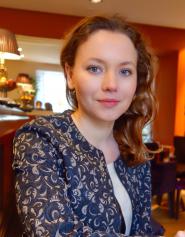 Dr. Yuliya Zabyelina
Dr. Yuliya Zabyelina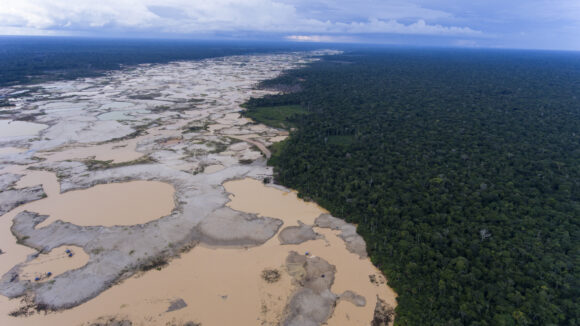
 If you’re speaking about climate change, organized crime is there as well. It’s a global issue, and it’s not a standalone topic—it needs to be looked at together with other problems, from the point of view of different disciplines, so we can cross-fertilize solutions. Everything is connected with everything.
If you’re speaking about climate change, organized crime is there as well. It’s a global issue, and it’s not a standalone topic—it needs to be looked at together with other problems, from the point of view of different disciplines, so we can cross-fertilize solutions. Everything is connected with everything.


Recent Comments